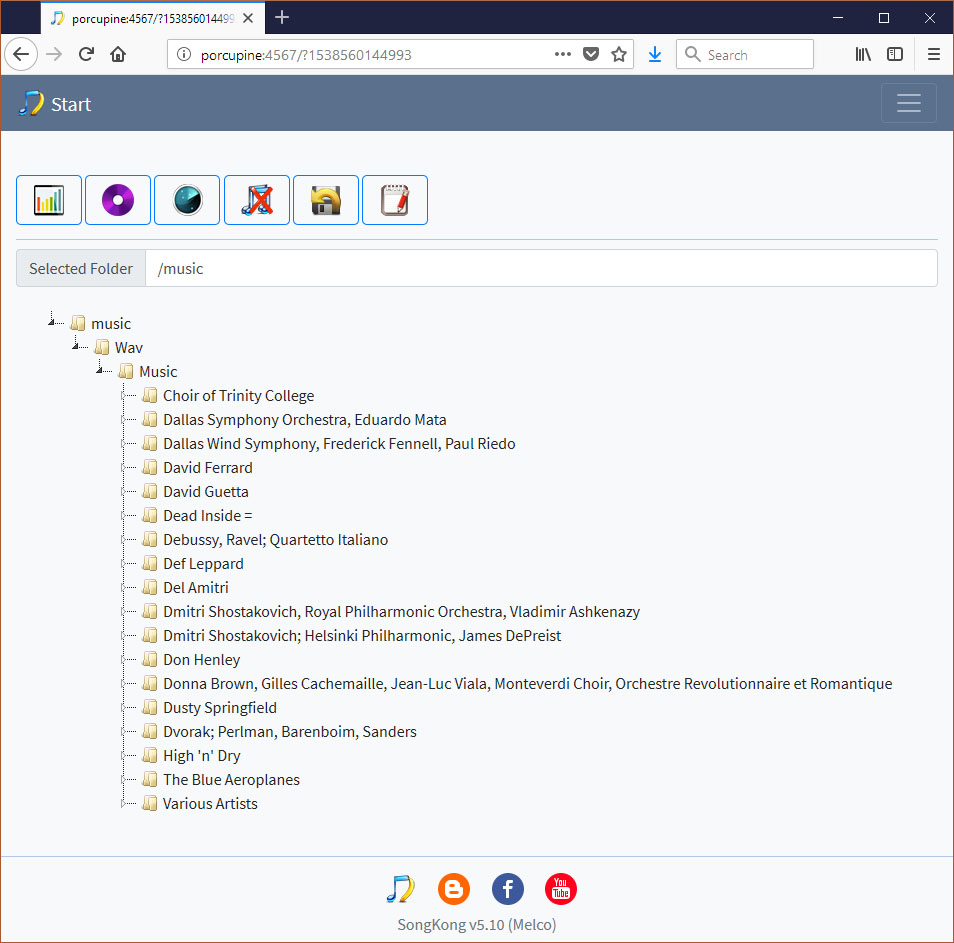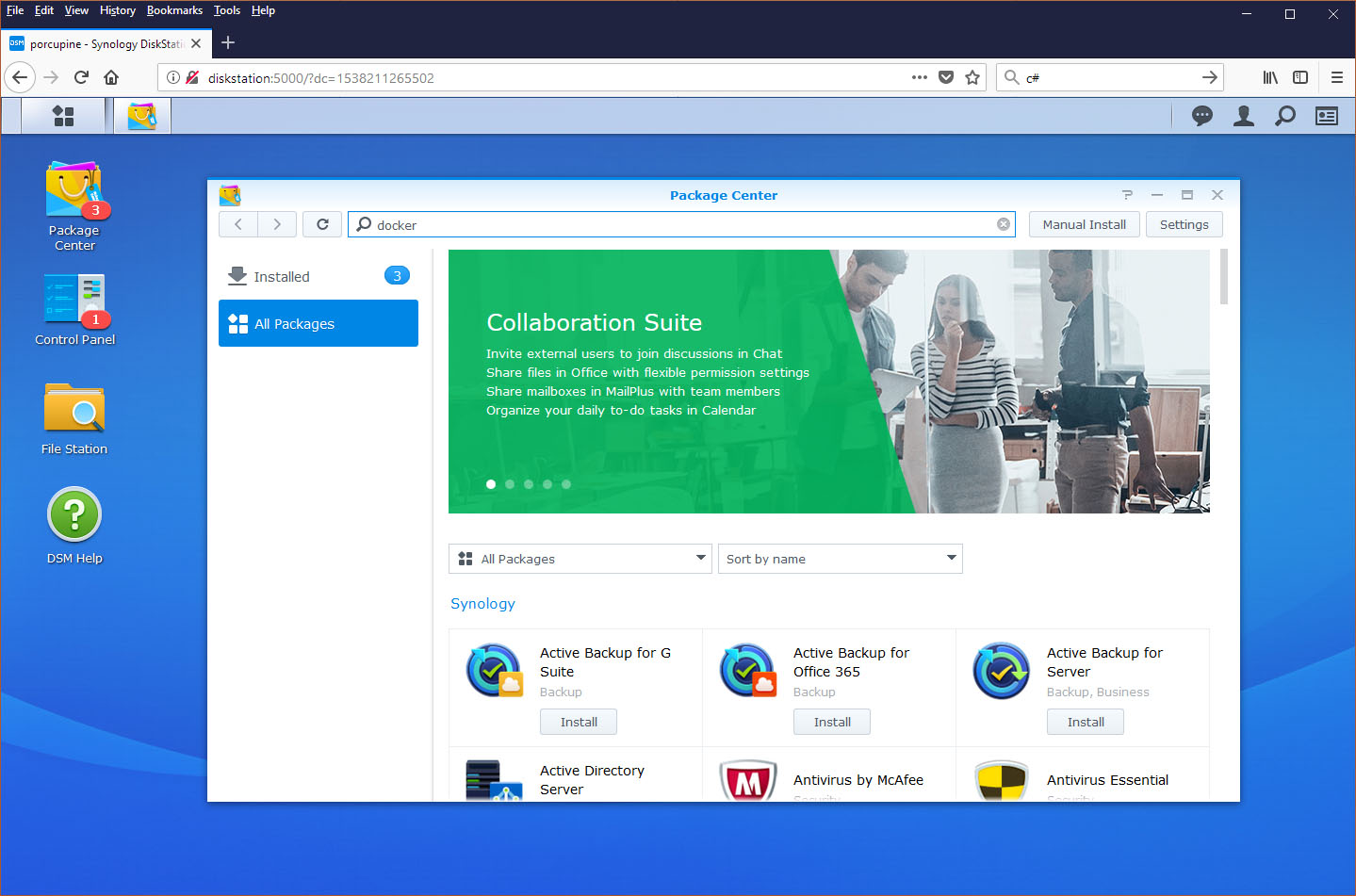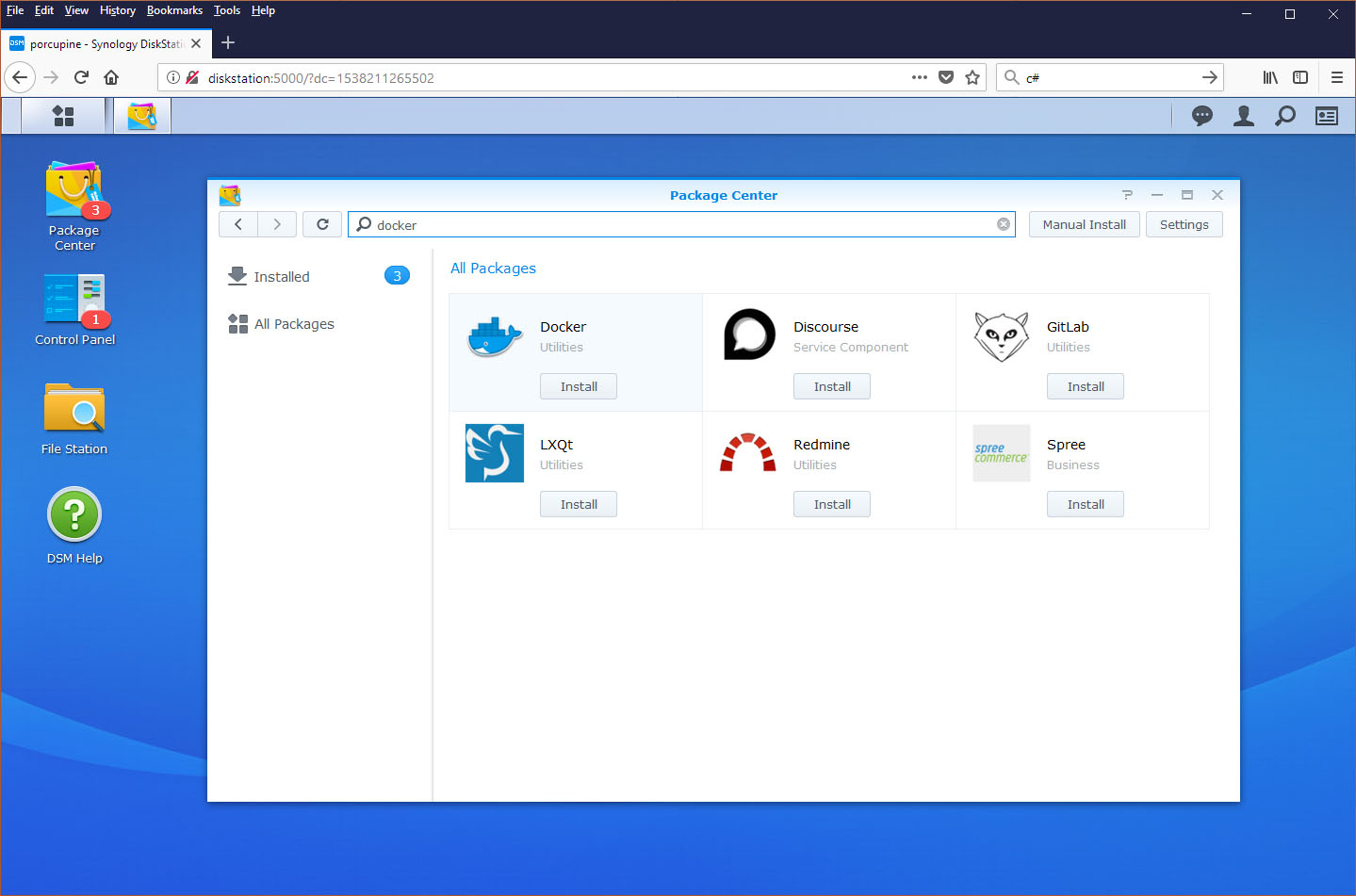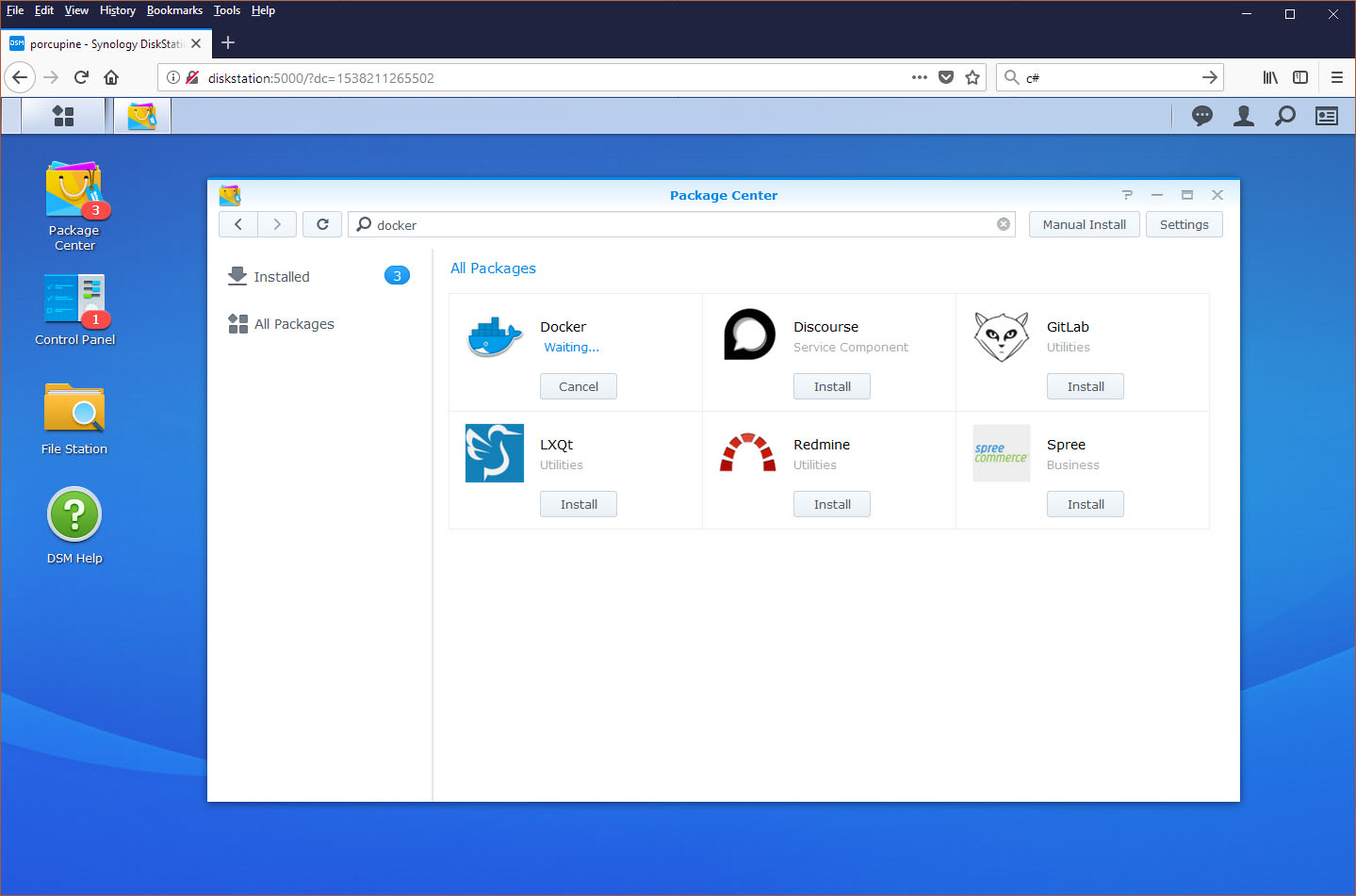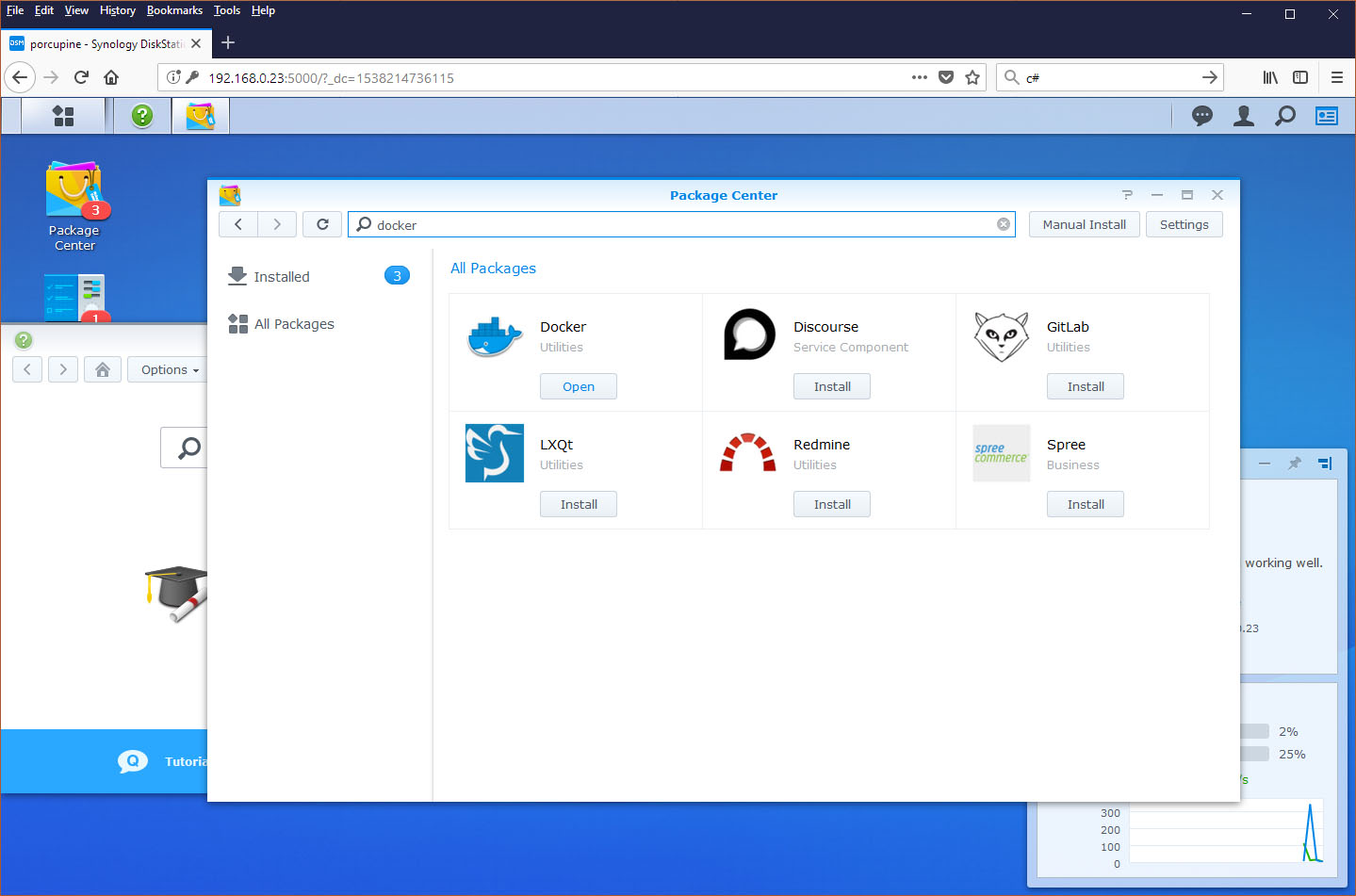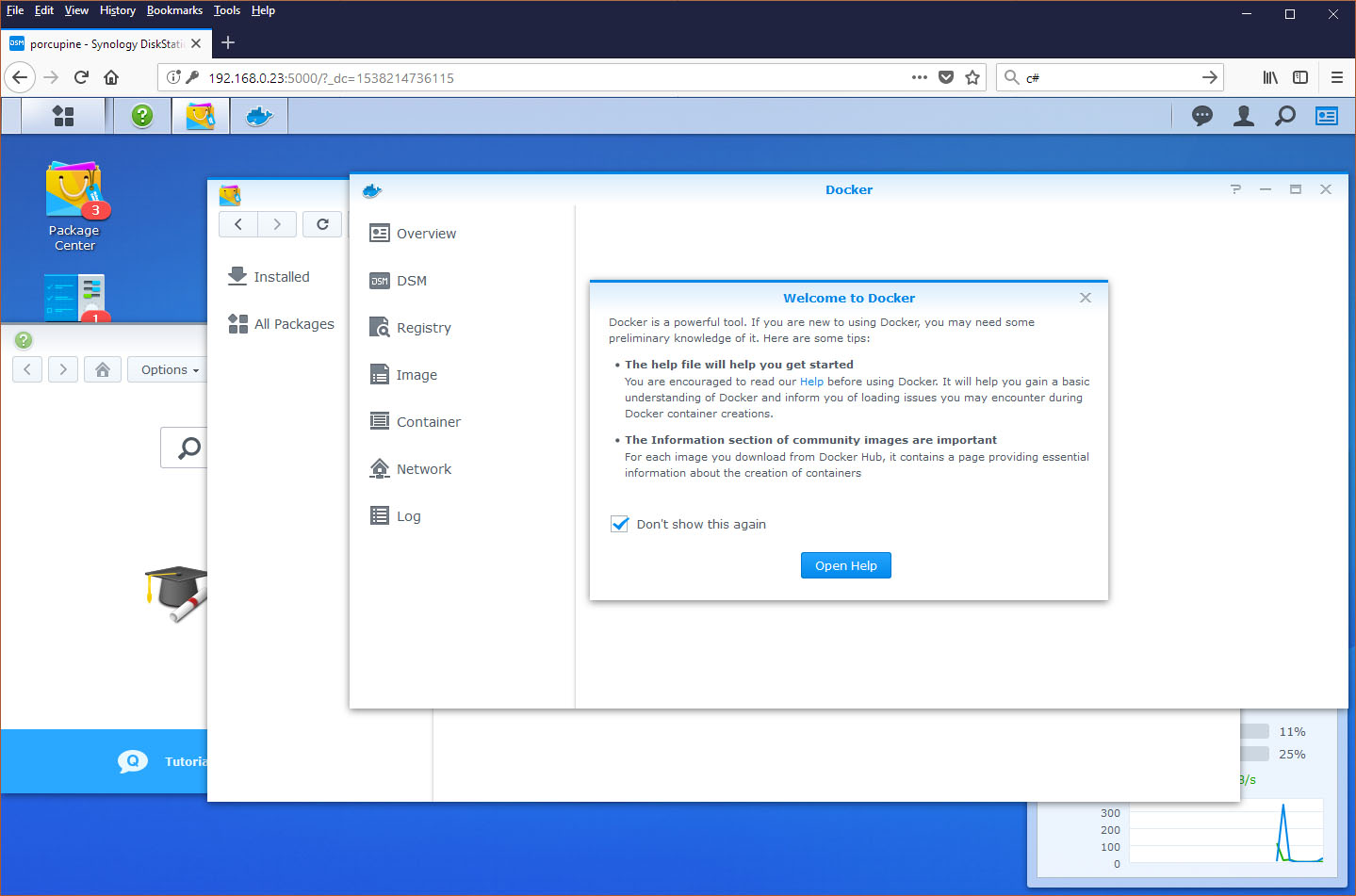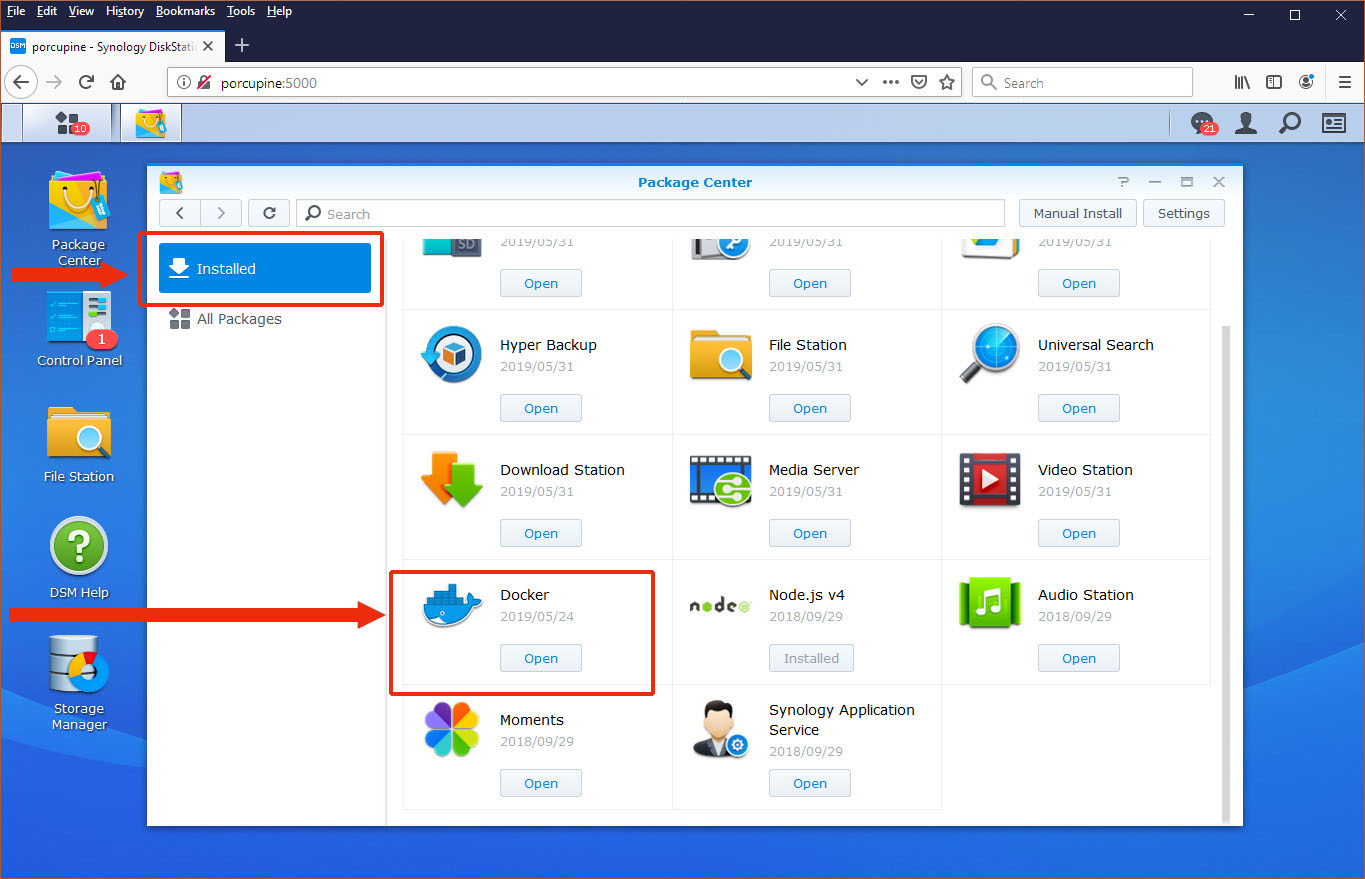SongKong Installation for Synology DiskStation (Intel)
SongKong is available for all Synology DiskStation models that support the Docker package, this is currently all Synology DiskStations with an Intel CPU
SongKong is available for all Synology DiskStation models that support the Docker package, this is currently all Synology DiskStations with Intel CPU
The following models are supported, full details from Synology Docker Page
- 19 series: RS1219+
- 18 series: FS1018, RS3618xs, RS818RP+, RS818+, RS2818RP+, RS2418RP+, RS2418+, DS3018xs, DS918+, DS718+, DS218+, DS1618+
- 17 series: FS3017, FS2017, RS3617xs, RS3617RPxs, RS4017xs+, RS3617xs+, RS18017xs+, DS3617xs, DS1817+, DS1517+
- 16 series: RS2416RP+, RS2416+, RS18016xs+, DS916+, DS716+II, DS716+, DS216+II, DS216+
- 15 series: RS815RP+, RS815+, RC18015xs+, DS3615xs, DS415+, DS2415+, DS1815+, DS1515+
- 14 series: RS3614xs, RS3614RPxs, RS814RP+, RS814+, RS3614xs+, RS2414RP+, RS2414+
- 13 series: RS3413xs+, RS10613xs+, DS713+, DS2413+, DS1813+, DS1513+
- 12 series: RS3412xs, RS3412RPxs, RS812RP+, RS812+, RS2212RP+, RS2212+, DS3612xs, DS712+, DS412+, DS1812+, DS1512+
- 11 series: RS3411xs, RS3411RPxs, RS2211RP+, RS2211+, DS3611xs, DS411+II, DS411+, DS2411+, DS1511+
Models with Arm, Power PC chips and some older models are not currently supported
Essentially the older and lower power models do not support Docker, the newer more powerful models do support Docker
The least expensive Diskstation to support Docker is the D218+
Essentially Docker is way to run an application on all variants of linux in a standard way, without having to do different installations for different linux variants. It is especially useful for NAS machines since each NAS manufacturer has its own method for installing additional software, for example Synology uses spk files.
Whilst these instructions are tailored for Synology they should be almost the same for any NAS or computer that supports Docker.
If you already have Docker package installed then you can skip this section
Install SongKong
-
Open the Package Centre from the Diskstation DSM and select the Installed Packages tab, and then select Open Docker
-
Select Registry from the left hand side and search for SongKong in the search bar.
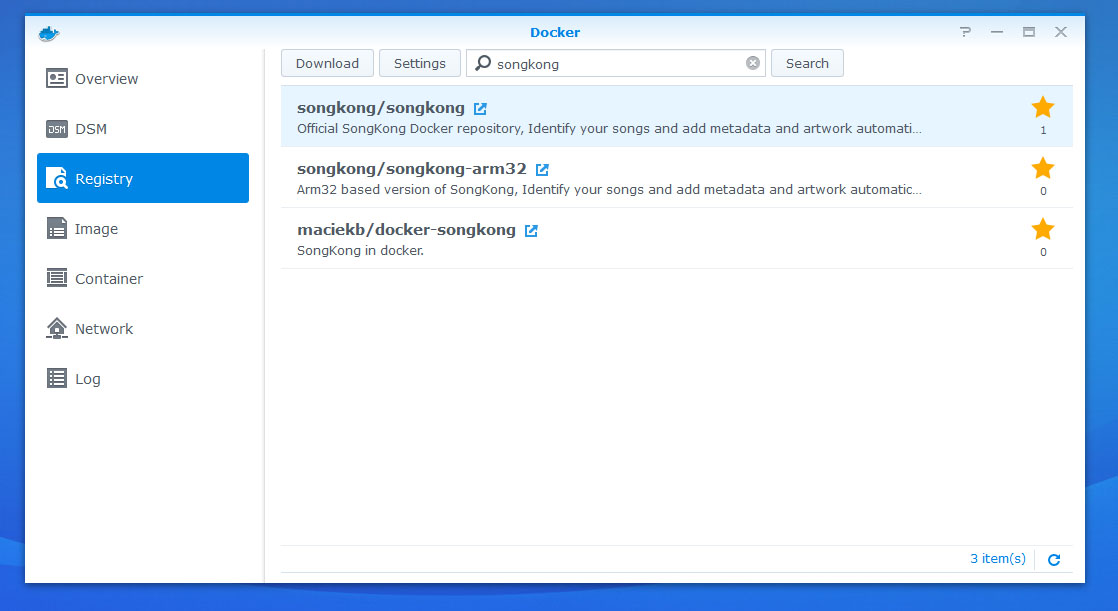
-
This may return multiple images but now the official version that matches these instructions is the one called songkong/songkong, please select this one and wait for it to download.
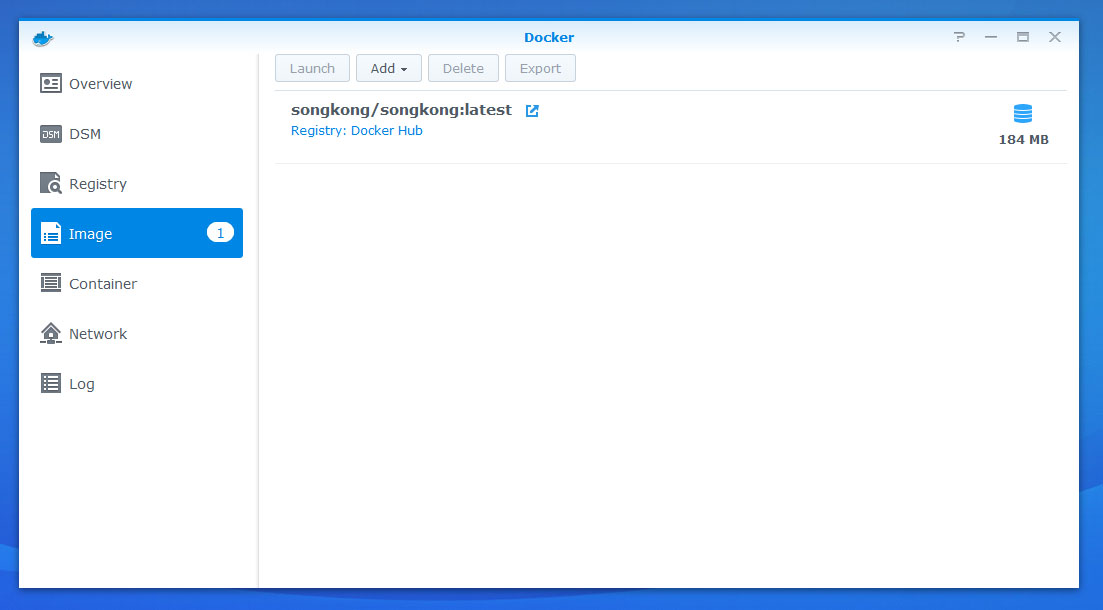
-
Select this image and select the Launch button, this will then show the General Settings window
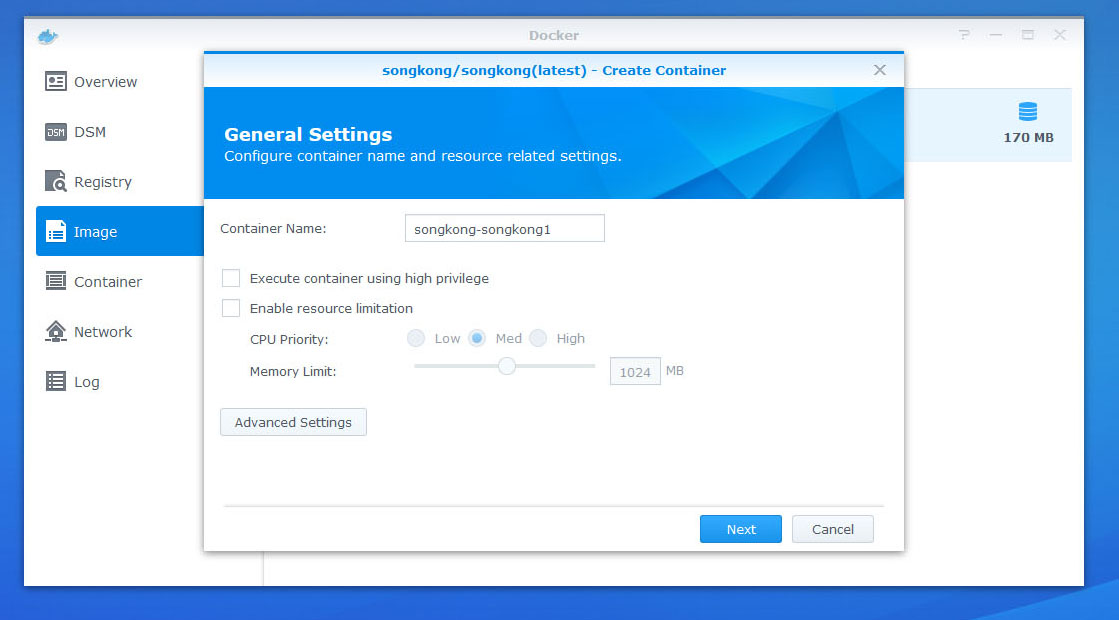
-
Select the Advanced Settings button, and go to the Volume tab
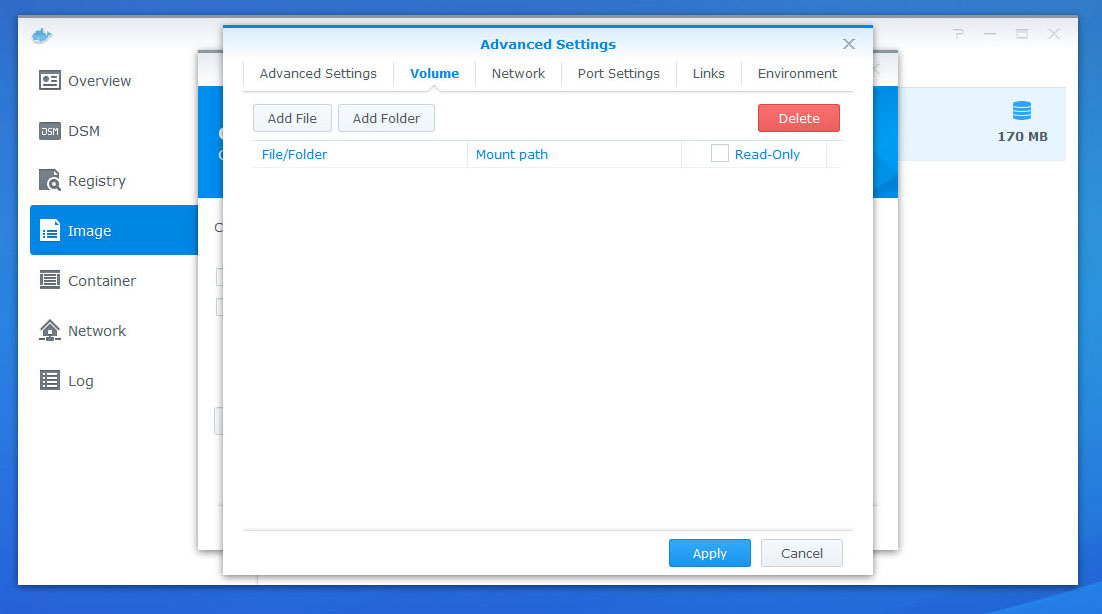
-
SongKong is running inside its own virtual machine so by default cannot actually see any of your Music files within your Synology unless you configure the details. Select Add Folder then select your music folder, this would usually be the top level shared folder music (but it does not have to be) and press Select
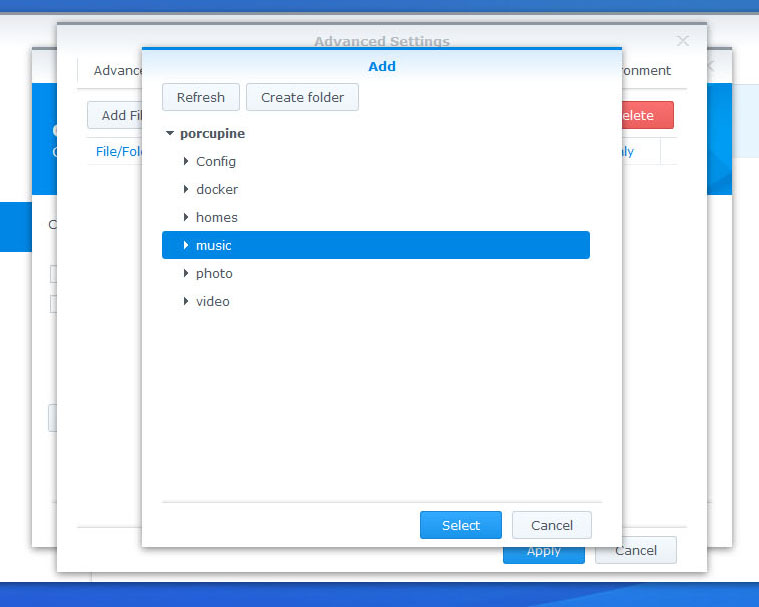
-
Now enter the mount path this must be set to
/musicbecause this is the special mount point defined in the SongKong Docker file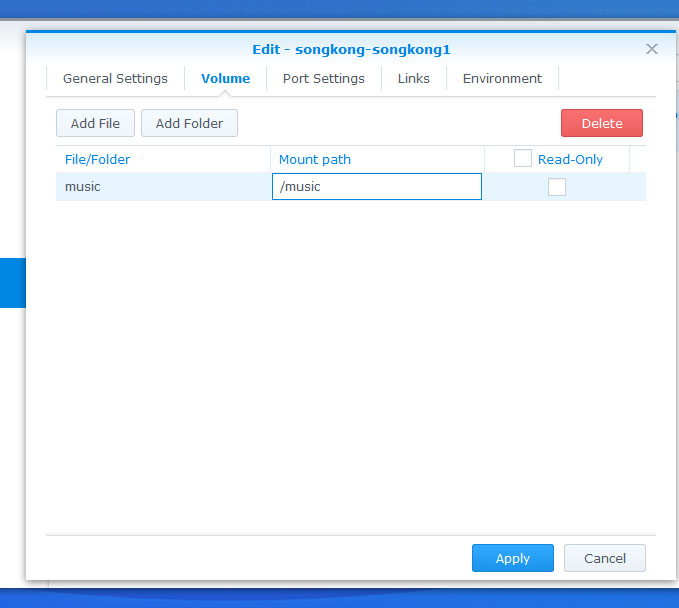
-
You can optionally also configure a mapping to SongKongs config folder, this gives access to SongKongs preferences, logs and reports from outside the Docker but is not strictly required since these are accessible from within SongKong application itself
Here we have created a new top level Shared folder called config, and then created a songkong folder within it, the mount path needs to be set
/songkong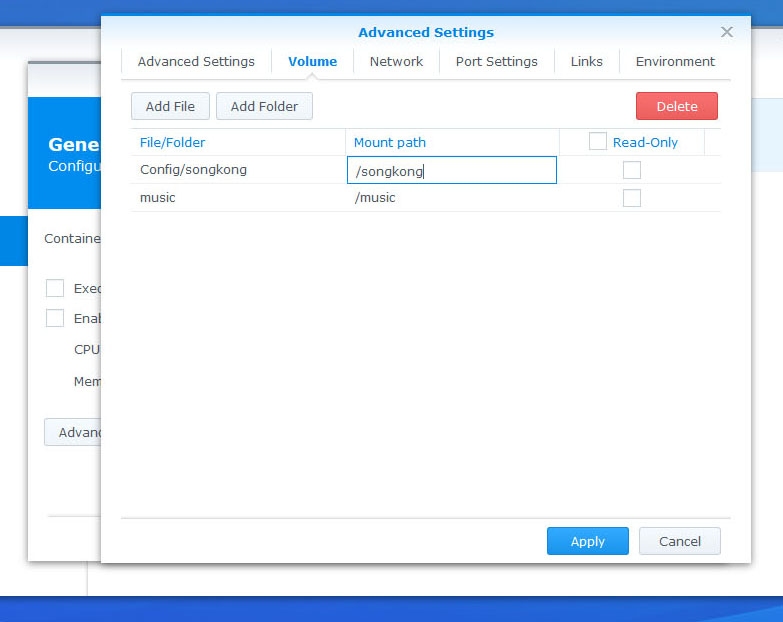
-
To make the docker container visible from outside of the Synology Nas the easiest approach is to select the Network tab, and enable Use the same network as Docker host. Alternatively if required you can use the Port Forwarding tab and enable the 4567 port.
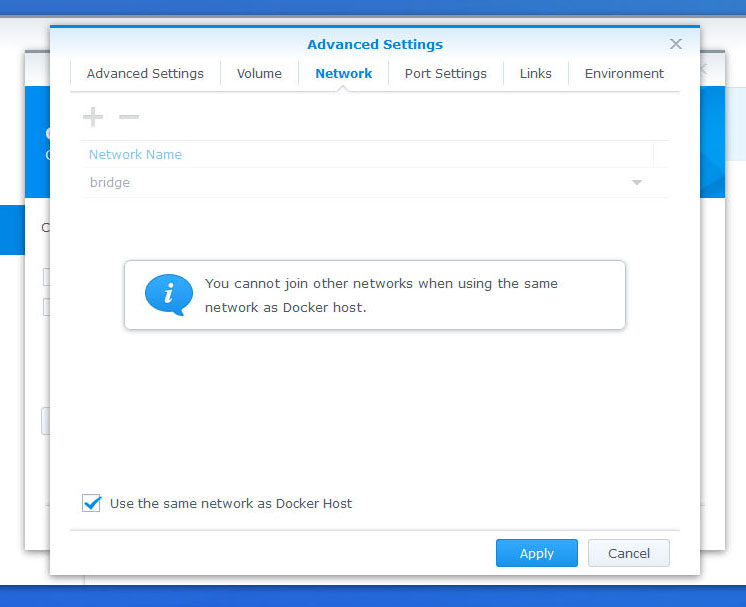
-
By default docker containers always run as UTC timezone, but it is easy to configure your own timezone. Select the Environment tab and add new variable TZ with suitable timezone value, the full list can be found here
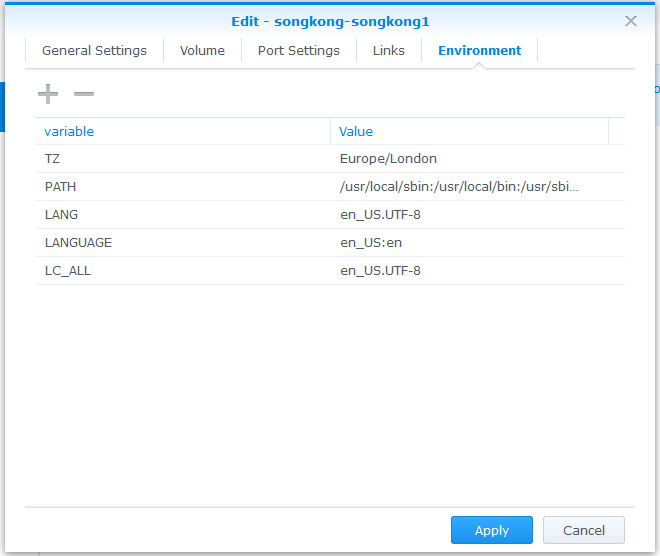
-
Select the Apply button, review and then select Next and then Apply again to start the SongKong image in a container
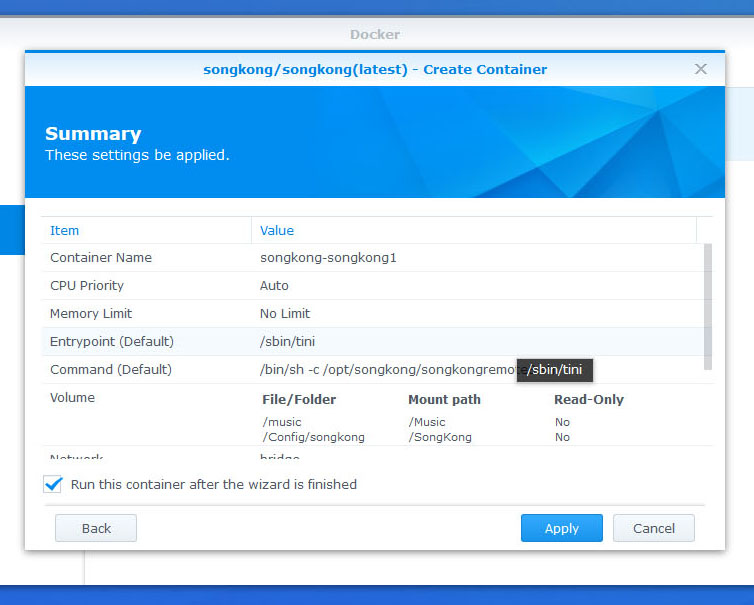
-
SongKong should now start almost immediately and is listed under the Container section
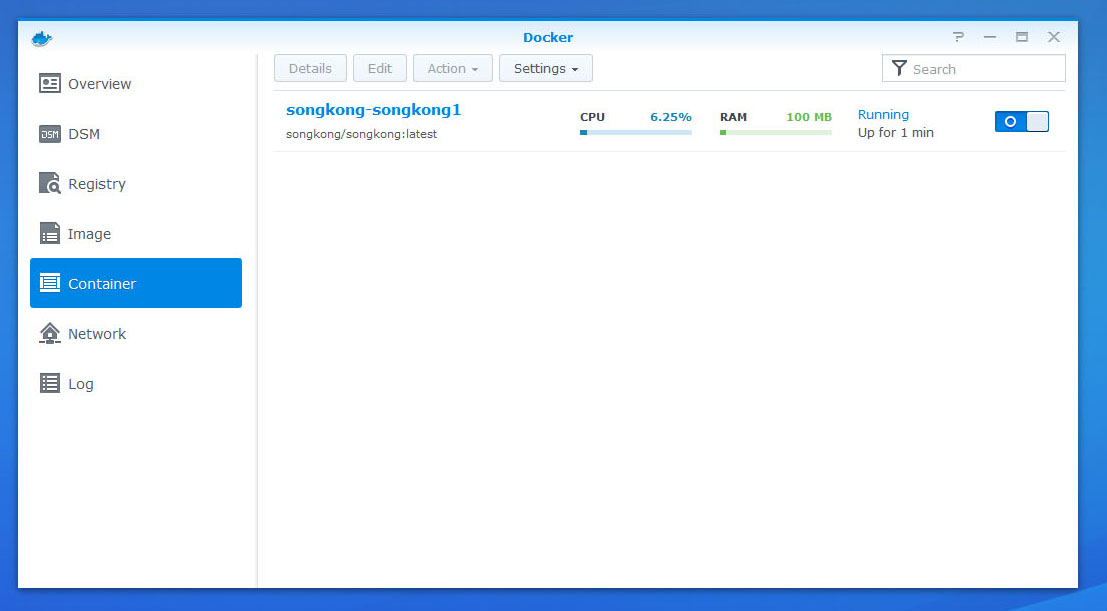
-
SongKong should now be available on port 4567, this is the full version of SongKong, license can be installed by selecting the License menu item.
